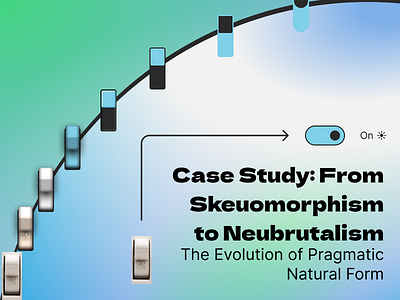Case Study: The Evolution of Pragmatic Natural Form
Preface
Natural Form is the third design principle of the Edge Design System. Contrast, Symbolism, and Natural Form work in tandem to create paradigms in every phase of design, from the wire framing to the engineering phase. each principle was researched in separate case studies, and then combined to create a coherent design system. A link to the full design system can be found here.
Defining Natural Form
"Form that implies function" is the most basic definition of natural form in the context of this design system. To elaborate on what this means, natural form can be thought of as a design which aims to make it's function very apparent. One way to do this is to design a component based on a real world object that most people within the target audience know how to use. For example, a boolean toggle, something that can switch between `true` or `false`, performs a similar function to a light switch, which turns a light `on` or `off`. Additionally, light switches are almost universally recognized for this particular function. Therefore, because they share similar functions, and the light switch is intersubjectively recognized for it's function, the boolean toggle should mimic the form of a light switch.
Skeuomorphism: A Solution With New Problems
Skeuomorphic design is best equipped to achieve natural form, as its main prerogative is to imitate reality in as many ways as practically possible.
However, skeuomorphism often leads to poor Contrast, inconsistent design, and performance issues for older machines. Therefore, the goal of the designer is to maximize natural form in a performant and scalable way.
Neubrutalism: The current solution
Natural form seems to only go so far on its own. At this point, the next logical step seemed to be to leverage the other two principles, Contrast and Symbolism, to maintain natural form in a more practical way; one that was accessible, performant, and scalable. Although Neubrutalism is a relatively minimal aesthetic, it's hard lines and sharply contrasting colors make it a prime candiate for upholding all design principles at once. Furthermore, by adding symbolism into the mix, a more universal understanding of a components purpose could be reached.
Conclusion
While mimicking a real life object as closley as possible may make a component's function more easily understood, doing so may present user problems in the form of accessibility and performance, and developer problems in the form of scalability. A pragmatic approach to strike a balance between realism and usability is the best way to increase the understanding of a components function.
